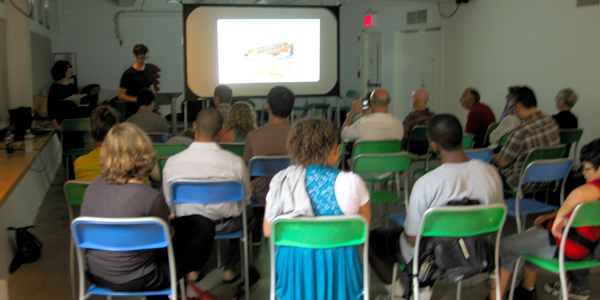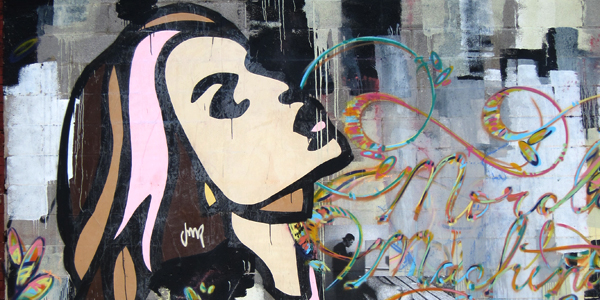Thank you to all who attended Seeking Space | Appropriated Environments in Long Island City, AGENCY’s public program in LIC earlier this month.
The public discussion at the Noguchi Museum Education Space drew a wonderful crowd, including students, designers, architects, artists, and local residents interested in the unique character of their community. We were pleased to meet so many likeminded and engaged individuals, and to learn more about the LIC community from their point of view.
Many followed for the tour, where we were joined by others for the walk through Socrates Sculpture Park, the LIC Community Boathouse launchpoint at Hallet’s Cove, Two Coves Community Garden, and the Welling Court Mural Project. The tour was greatly augmented with informal talks and question-and-answer sessions with Alyson Baker (Exec. Director, Socrates Sculpture Park), and Rebekah Tuffey (Two Coves Community Garden), who spoke passionately about their first-hand experience, and the rich history of these incredible sites.
For those who missed it, we’ve copied notes and slides from the presentation, with photos from the tour below:
On the edge of the most densely populated metropolis in the US, Long Island City is host to a growing number of unlikely spaces. The area’s sprawling and fragmented urban fabric is uniquely suited to public and private enterprises that recognize the potential of the neglected, forgotten, misunderstood, and invisible zones of the contemporary city.
Certain individuals and social groups exhibit a finely tuned awareness of the potential in otherwise neglected urban environments. Without the resources afforded other city dwellers, these “space seekers” can help us to reimagine the city, both by seeing the beauty and potential already infused in its most inhospitable environments, and in imagining new use within the normalized urban fabric.
Where the rest of us see only the opportunities presented to us, these people have an uncanny ability to create opportunity for themselves, opening both social and physical space in a city that notoriously covets both.
How is the “space” of the contemporary global city changing? While developing countries rapidly industrialize, developed countries are completing their transition into full service economies. The historic industrial fabric of cities and entire regions is thereby stripped of its intended use. Entire companies are outsourced to developing countries, where labor is cheap and production is less restricted, leaving formerly lively zones vacant and underused, forgotten.
At the same time, our cities’ populations are rapidly expanding. Without factory and production jobs in rural and exurban development, workers are moving to the city to find their place in the new economy. Upon relocation, many are finding that space is unavailable, or that it comes at a premium beyond their means. Many are turning to the least desirable spaces of the city to find an affordable lifestyle, while maintaining the benefits that an urban lifestyle would provide.
Without the burden of prescriptive urbanism, these individuals are uniquely endowed with the capacity to redefine the contemporary city, turning seeming disadvantage into novel and productive urban form.
Photos ©2010 AGENCY and H.B. Oko
Stephen Mueller and Ersela Kripa are 2010 Artist Fellowship recipients of the New York Foundation for the Arts (NYFA). This presentation is co-sponsored by Artists and Audiences Exchange, a NYFA public program, funded with leadership support from the New York State Council on the Arts (N
YSCA).






